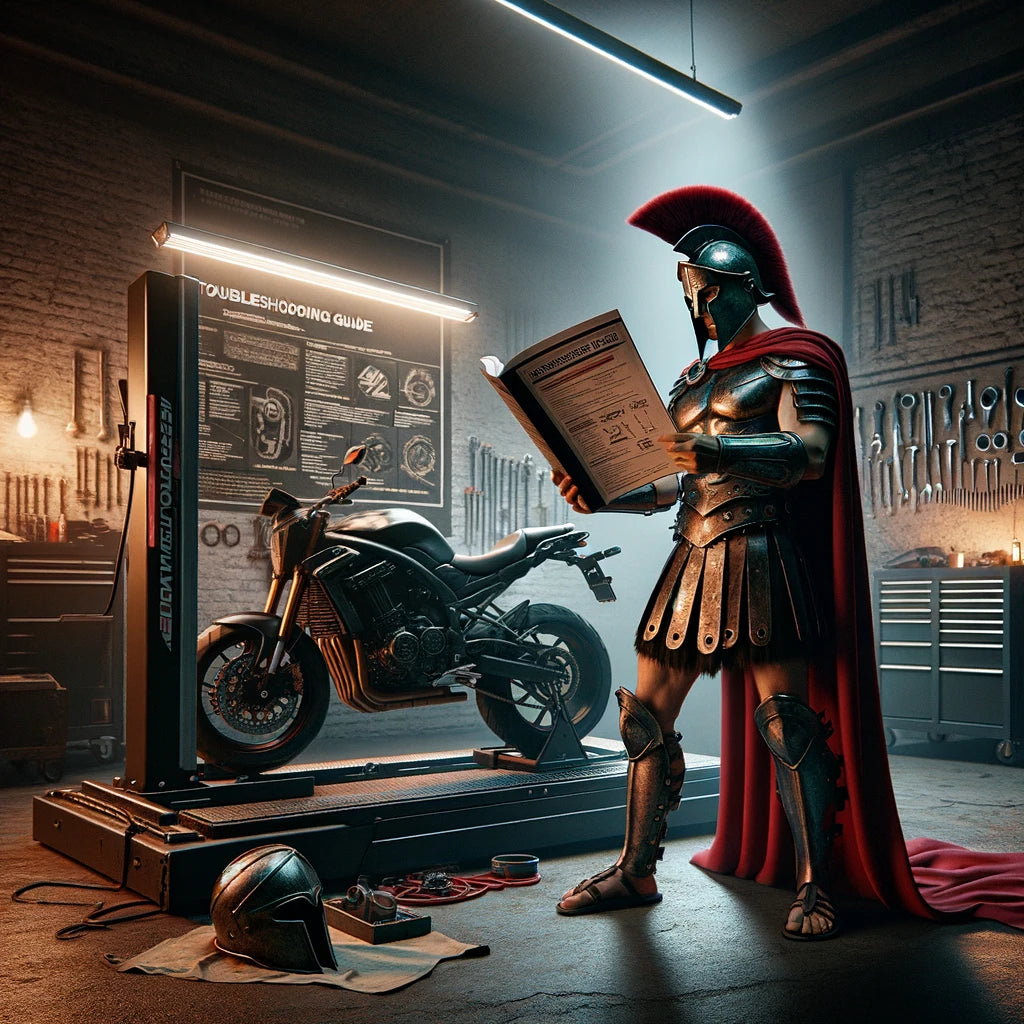Troubleshooting your motorcycle lift is crucial for ensuring it operates safely and effectively. This guide will help you fix common problems with various types of motorcycle lifts.
These include hydraulic, pneumatic, electric, and scissor lifts. The guide provides step-by-step solutions to help you resolve issues quickly. It provides step-by-step solutions to resolve issues quickly.
Understanding Lift Mechanics
Each type of motorcycle lift has unique mechanisms, but they all share some common components that may fail. Understanding these can help you diagnose and fix issues faster:
- Hydraulic Lifts use fluid pressure to raise and lower the lift.
- Pneumatic Lifts rely on air pressure supplied by an air compressor.
- Electric Lifts utilize electric motors to operate the lifting mechanism.
- Scissor Lifts use mechanical linkages powered by one of the above methods to elevate the platform.
Common Issues and Diagnostics

1. Hydraulic Lift Issues
- Won't Raise or Lower: Check hydraulic fluid levels; refill if low. Inspect for air in the system and bleed as necessary. Ensure the hydraulic pump is functioning correctly.
- Leaks: Look for wet spots or drips under the lift and along hydraulic lines. Tighten connections or replace damaged hoses.
- Erratic Operation: Test the control valves and seals for wear and replace them if they are faulty.
2. Pneumatic Lift Issues
- Inconsistent Lifting Speed: Verify the air compressor is fully operational, check for air leaks in the system, and ensure the air pressure is correctly set.
- Failure to Maintain Height: Examine the seals and the air cylinder for leaks or damage.
- Air System Contamination: Regularly clean air filters and check for moisture in the system that can cause rust and contamination.
3. Electric Lift Issues
- Electrical Failures: Ensure the lift is plugged into a working outlet. Check all wires and fuses for breaks or burnouts. Test the motor to rule out failure.
- Overheating: Avoid continuous use beyond the manufacturer’s recommendations. Check the motor for ventilation issues.
- Unresponsive Controls: Replace faulty switches or relays that do not respond to user commands.
4. Scissor Lift Issues
- Mechanical Wear: Inspect the pivot points and bearings for excessive wear. Lubricate and replace worn parts as needed.
- Alignment Problems: Make sure the lift is on a level surface and adjust as needed to ensure proper alignment.
- Stability Issues: Check the weight distribution on the platform and ensure the base is stable and secure.
Tools and Resources for Troubleshooting

Keep these essential tools on hand for troubleshooting and repairs:
- Wrench set
- Screwdrivers
- Multimeter (for electrical tests)
- Hydraulic gauge
- Air pressure gauge
Keep a list of trusted suppliers and repair services for parts replacement or when DIY fixes are not recommended.
Preventive Maintenance Tips
Prevent regular issues with these maintenance tips:
- Regularly check and refill hydraulic fluids and air pressure.
- Clean and inspect electrical components monthly.
- Lubricate mechanical parts to prevent wear and ensure smooth operation.
Regular troubleshooting and maintenance of your motorcycle lift are key to ensuring longevity and safety. By staying vigilant and addressing issues early, you can keep your lift in top working condition and avoid costly repairs.
Ready to enhance your lift maintenance skills further? Dive deeper with our comprehensive article for expert tips on long-term care. Explore our full collection of motorcycle lifts to find the perfect match for your maintenance needs!

